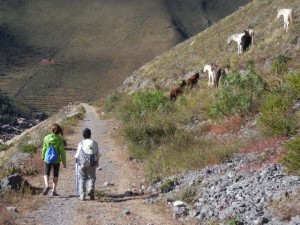6 May: From Cusco we rode by van into the Sacred Valley of the Incas to spend a couple of days in the ancient town of Ollantaytambo. Our B&B was in the old section of town, among narrow cobblestone streets lined by two-story buildings on the original Incan foundations. A short hike took us up a steep slope to old stone ruins with a view of the town below, ancient buildings above, and the archaeological site across the valley.
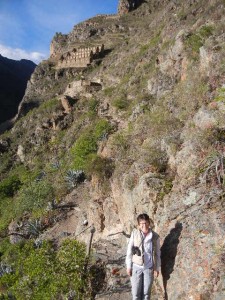
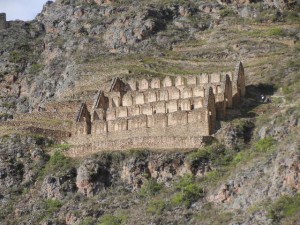
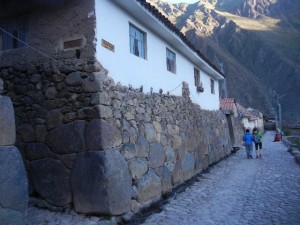
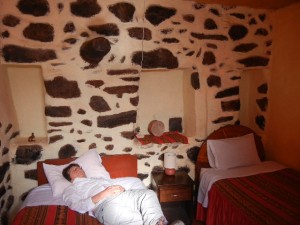
7 May: Before breakfast, we hiked farther up Pinkuylluna Mountain to the ruins we had seen from below yesterday. These buildings were in very good condition except that the thatch roofs had rotted away long ago. Known as colcas, these were food storehouses. Excess food produced during Incan rule provided security against crop failures and also freed some of the labor force for public construction projects and military service. The high elevation of the colcas (far above the agricultural fields) prolonged the storage period for the food due to the colder temperatures. We took a tour through the archeologial park on the west side of the valley overlooking Ollantaytambo. This site includes ceremonial fountains, a building aligned to the June solstice sunrise, an extensive set of stone terraces, some more colcas, and a sun temple. Some of the original stucco still remains on the old walls: the Incans imbedded plant fibers and sometimes human hair to give the stucco strength, and used animal fat in the mix to make it weatherproof. Not only is the stone masonry leading up to the sun temple is superb, but because this complex was not completed at the time of the Spanish conquest, stones abandoned before their final carving and fitting into place provide valuable insight into how the Incan masons accomplished their work. Some of the stones interlock like puzzle pieces or Legos to give walls structural integrity. All were fit together precisely and without any mortar. Some of the largest stones are separated by narrow stones that could have acted as “expansion joints” as protection against earthquakes. Most of the original rustic ramp by which the stones were hauled on log rollers up to the construction site is clearly visible. The site from which the stones were quarried is several kilometers away across a major river valley, so the river had to be diverted many times to haul the stones across the valley. In the afternoon we took a hike up the tributary river valley behind the town to see more examples of terracing.
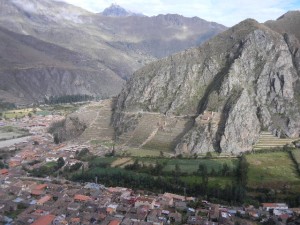
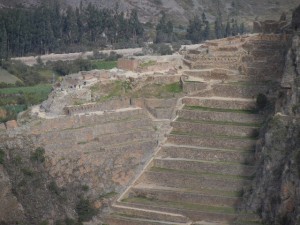
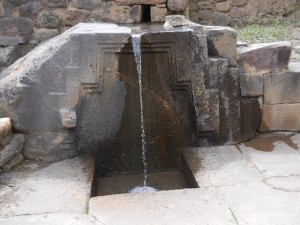
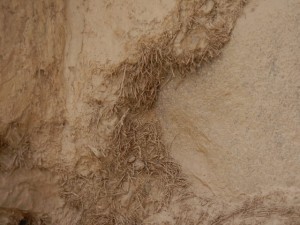
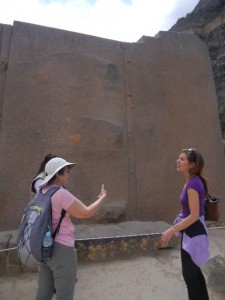
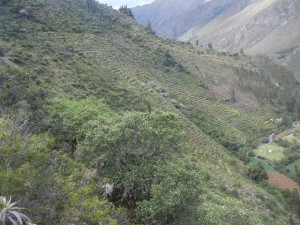
8 May: We hiked from Ollantaytambo across the river and up to the quarry that the Incas used. About half of the hiking trail followed the original haul road that the Incans used.
